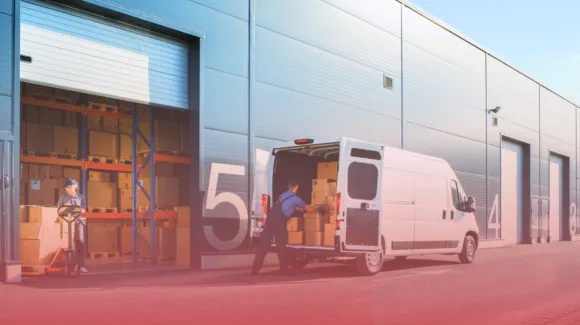In fashion, speed to market, flexible distribution and sustainable operations aren’t optional; they’re competitive necessities. Meeting those demands requires the right logistics base, and Ghent delivers it at the heart of North Sea Port – a 60-kilometre cross-border corridor stretching from Vlissingen on the Dutch coast to inland Belgium.
Here, fashion companies benefit from direct access to millions of consumers, low-emission transport options and a wealth of specialist logistics expertise. Practically, this means faster omnichannel fulfilment, more resilient supply chains and the ability to scale in line with seasonal peaks without infrastructure bottlenecks. For brands under constant pressure to cut lead times, reduce returns and demonstrate sustainability, Ghent provides both the connectivity and the operational flexibility to deliver.
Read on to discover how Ghent’s location, multimodal strength and development capacity can translate into growth opportunities for fashion brands across Europe.
Ghent at a glance: Logistics advantages for fashion brands
Impressive market reach:
Access to more than 500 million consumers within a 500-mile radius.
Multimodal flexibility:
Road, rail and inland waterway links reduce time, costs and carbon emissions.
Cross-border simplicity:
Unified data-sharing framework streamlines customs and administration.
Cross-border integration: Simplified logistics, modern infrastructure
Combining streamlined cross-border operations with modern infrastructure, Ghent gives fashion brands a logistics base designed for efficiency, reliability and growth. Located within the North Sea Port corridor, Ghent has operated as part of the unified port since 2018, when the Port of Ghent (BE) and Zeeland Seaports (NL) merged to create Europe’s first fully integrated cross-border operation: North Sea Port. This enables a range of benefits, including smoother customs processes, simplified access to key markets and a range of specialist services.
Multimodal logistics: Building sustainable supply chains
Another strength of Ghent-based logistics is the area’s multimodal connectivity, allowing brands to align speed, cost and sustainability in one location. To start with, North Sea Port provides streamlined access to the inter-European road network via the E17 and E40 motorways, providing direct links to the nearby French and German markets. Since France and Germany are the top two importers of apparel in Europe, this strategic placement can be advantageous for brands looking to expand quickly on the continent.
The port also integrates rail and inland waterway links, giving companies the flexibility to choose the quickest, most cost-effective or most sustainable mode for each movement. Recent investment in rail infrastructure supports North Sea Port’s goal to increase rail cargo share from 10% to 15% by 2030, providing a reliable and more sustainable alternative to road haulage. In addition, over 64 million tonnes of cargo were transported via inland waterways from North Sea Port in 2024, providing another low-carbon option.
An ecosystem of expertise: Providing specialist support
Alongside its excellent transport links, Ghent has developed into a hub of logistics expertise, with a high concentration of providers offering specialist services across the supply chain. For fashion brands, this means access to a range of generalist and specialist partners, including Bleckmann. They can provide dedicated support with key processes, from customs coordination to re-labelling, returns handling and other value-added services that are critical for high-volume lifestyle and apparel fulfilment.
Ongoing development projects are continuously adding new facilities, services and connections, making the area even more attractive to fast-growing brands. In 2024, port throughput reached 66.3 million tonnes despite challenging trade conditions,7 reflecting a robust and diversified logistics hub. For fashion companies, this expanding capacity means greater flexibility to handle seasonal peaks, reach new markets and adopt new fulfilment models. Ghent’s continued dynamism makes it one of the few European hubs where logistics capacity is not only available today but actively expanding for the future.
While the Port of Ghent has historically been best known for automotive and chemical logistics, recent developments over the past five years show an increasing focus on consumer goods. Sites such as the Ghent Logistics Campus (150,000 m2) 8 and Kennedy Industry Park (355,000 m2),9 housing a wide range of brands, reflect this trend. Ghent has therefore evolved into more than a port; it is a strategic growth platform for rapidly expanding fashion brands looking to balance speed, flexibility and sustainability. With cross-border integration, multimodal connectivity, specialist expertise and room to grow, it supports the resilience that today’s market demands. By tapping into this ecosystem, brands can scale across markets with less risk and greater efficiency, gaining the space, infrastructure and partnerships they need to pursue ambitious, future-proof strategies.
Want to find out how your brand could benefit from moving fulfilment operations to Ghent? Get in contact today for a free consultation with a Bleckmann expert!












